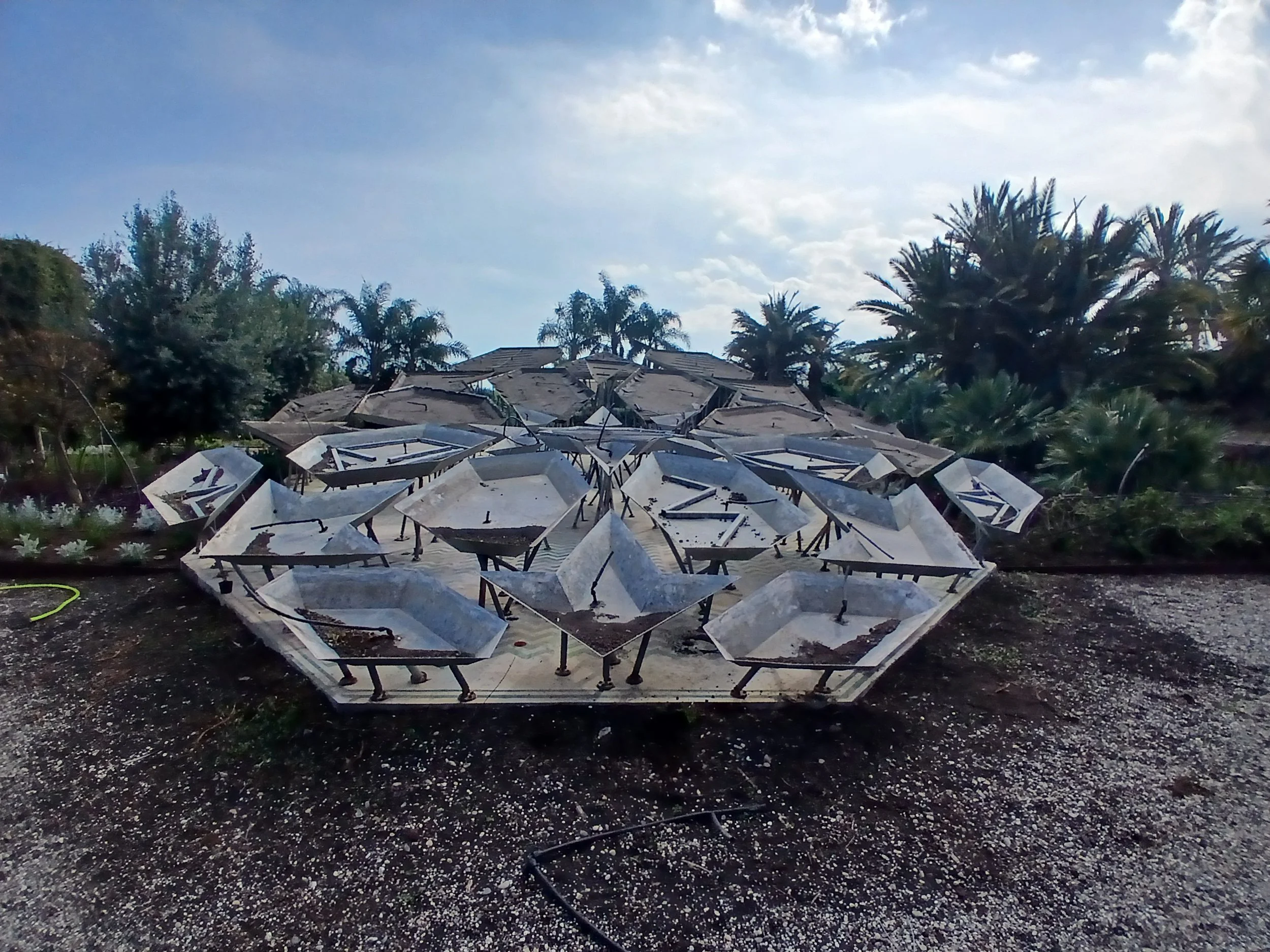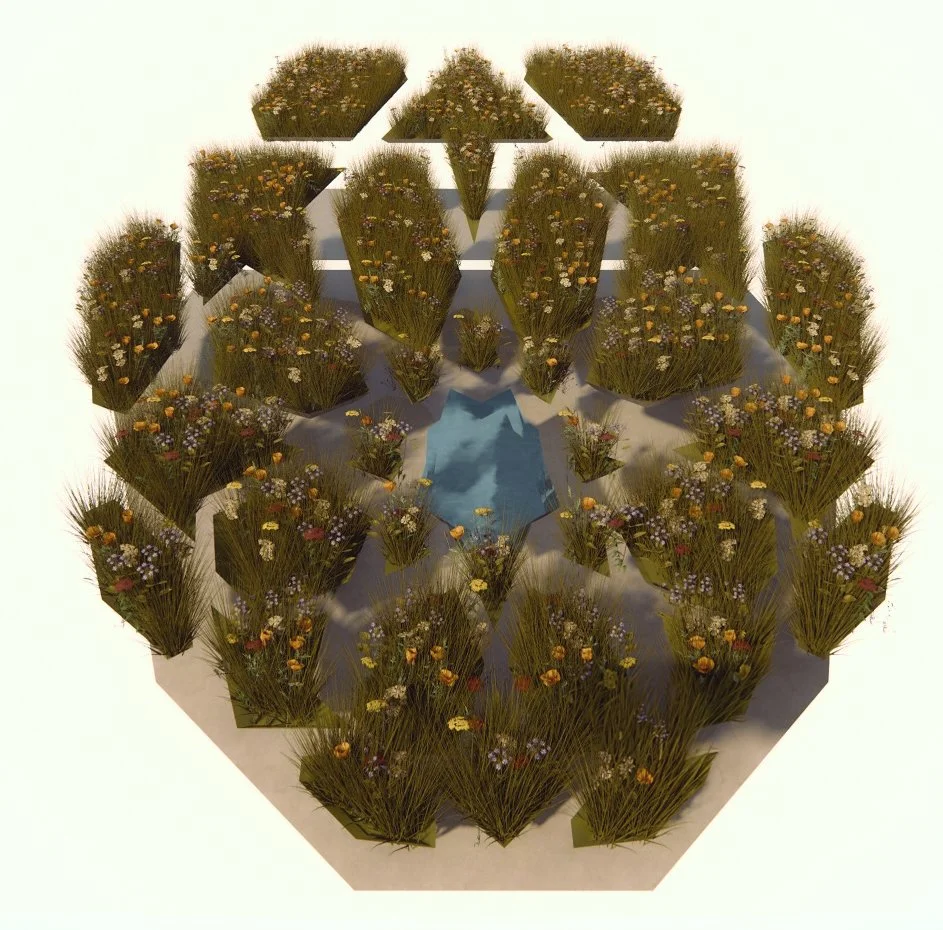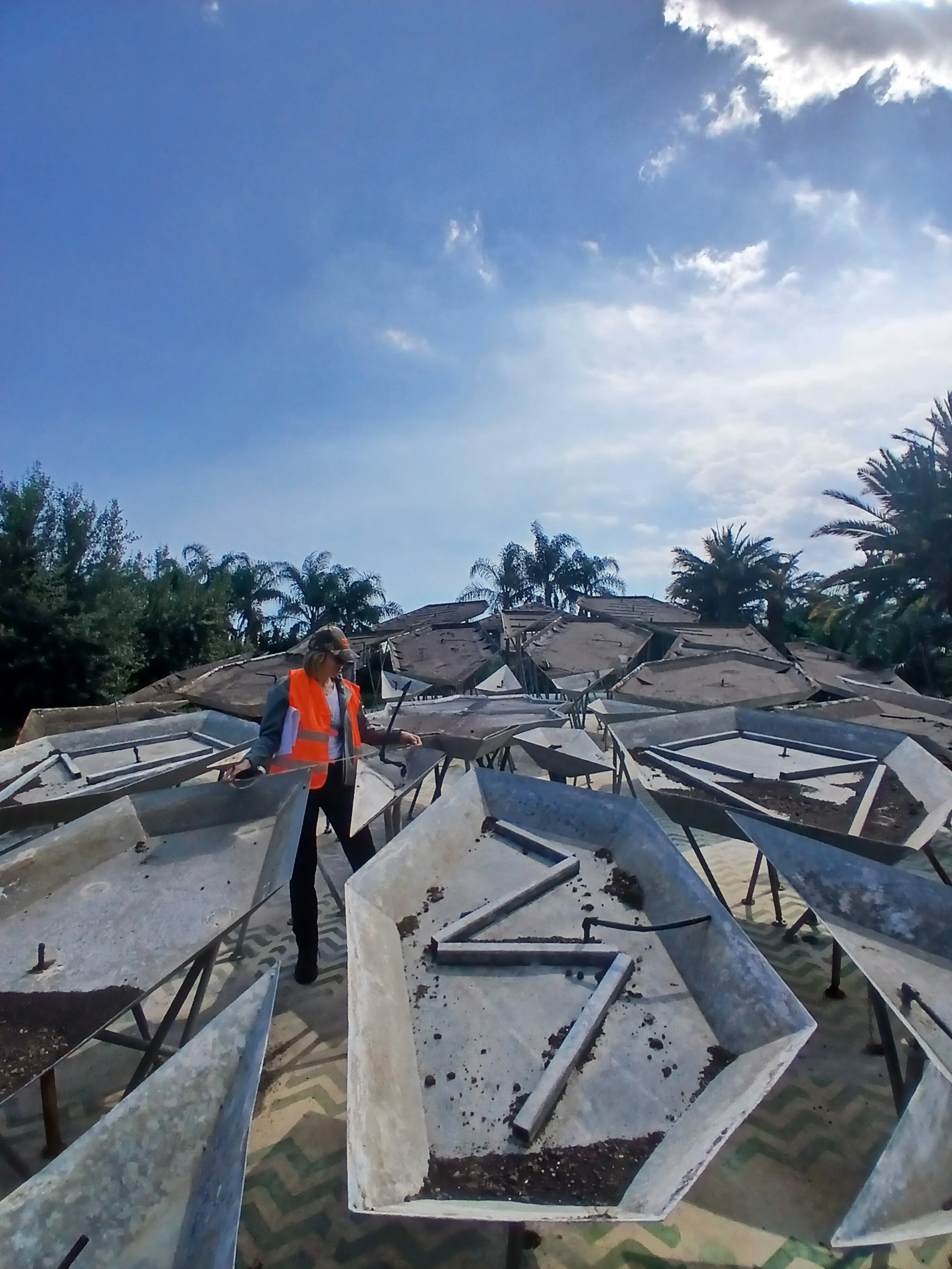A NATURAL ANAMORPHOSIS
DATE: April – May 2025
ROLE: Concept and planting design for a contemporary installation in inclined containers, covering a total area of approximately 220 m².
The realization of the work is described in the following section. [Click here to read it.]
NARRATIVE:
Concept and Design
In 2025, I participated as a volunteer at the Radicepura Garden Festival. Initially, I had wanted to propose my own project, but I didn’t meet the competition criteria. Still, I decided to be there—I wanted to learn, to understand up close what it truly means to build a garden within such a complex and inspiring context.
During the setup, my attention was repeatedly drawn to a large installation at the center of the exhibition area: Anamorphosis, a work by French artist François Abelanet. It consisted of thirty-three inclined containers arranged to form an octagon visible only from a precise, elevated viewpoint. From that perspective, the shape appeared regular and symmetrical. But as you approached, everything distorted: the diamonds at the bottom were tiny (2 m²), while those at the top were much larger (up to 15 m²). An optical illusion based on anamorphosis—a technique that allows a distorted image to appear coherent only when viewed from a specific point—in this case, from a raised platform about three meters above the ground.
This installation has been a festival icon for years, and it was precisely there that I wanted to intervene, bringing into this fixed, geometric form a living, ephemeral, spontaneous element.
A Reflection on Order and Chaos
The theme of the 2025 Biennale was Order and Chaos. Although the Anamorphosis installation was not conceived with this in mind, I couldn’t help but approach it through that lens.
For a designer like me, order is what we seek when selecting seeds, sketching a layout, or choosing the precise moment to sow. Yet the moment those seeds touch the soil, a different kind of order begins—the order of nature, which decides what will sprout, when, and how it will bloom. A process that may appear chaotic to human eyes, because it eludes prediction. Yet for nature, it is simply the way it works.
It was this tension—between control and unpredictability, between intention and spontaneity—that guided me. What we perceive as disorder is often just a deeper order we have yet to understand.
Choosing the Species
My starting point was clear: a spontaneous wildflower meadow, inspired by the work of Nigel Dunnett, which I had the chance to explore a year earlier in London (Superbloom). I selected three pre-mixed seed blends, seeking a balance between annuals with vibrant, fleeting blooms and perennials with a more enduring, solid structure. I wanted to create a light, dynamic landscape, with staggered flowering, visual contrasts, and a rhythm that shifts and flows.
I paid attention to variety in color—from white to yellow, through pink, blue, and touches of deep red—and in form: the delicacy of a cornflower beside the commanding presence of a zinnia. In total, over forty species, chosen to provide biodiversity, visual impact, and seasonal adaptability.
From Concept to Model
To make my vision tangible, I decided to model the entire installation in 3D. With no detailed plan available, I began taking every measurement myself, tank by tank.
I worked each morning at dawn, before the day’s activities began, so as not to take time from the group or the other installations. It was long, meticulous work: each tank had different dimensions, inclinations, and orientations. Reconstructing it in the software felt like decoding a geometric puzzle, where even a small proportional error could alter the optical effect.
A Small Personal Victory
When my proposal was accepted, I felt a full, overwhelming joy. We hadn’t even sown the seeds yet, but I had been entrusted with someone’s confidence—and that alone felt like a milestone. In such a visible, symbolic space, I had been given the chance to share my vision!
It was a small victory, an external confirmation that I was on the right path. And after such a profound life and career change, it was exactly what I needed.






